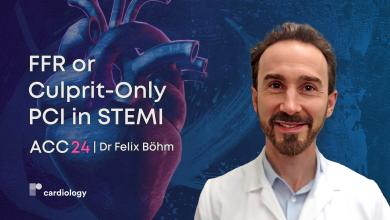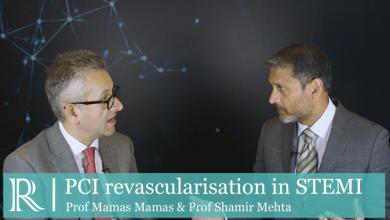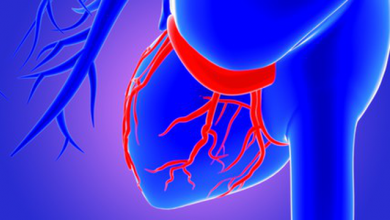Search results
Author(s):
Dan Burkhoff
,
Sandeep Nathan
,
Jerry D Estep
,
et al
Added:
2 years ago
Despite advances in reperfusion with primary stenting, progress in STEMI outcomes has stalled over the past 20 years. With 90% of coronary blood flow in the capillaries, the answer might be in the microvasculature. TherOx SSO2 Therapy is the first FDA approved therapy shown to significantly reduce the infarct size in STEMI patients.
During this series of webinars on Supersaturated Oxygen …
View more
Author(s):
Felix Böhm
Added:
1 week ago
ACC.24 — Investigator, Dr Felix Böhm (Danderyd Hospital, SE) joins us to discuss the findings from a study investigating fractional flow reserve-guided complete or culprit-only percutaneous coronary intervention (PCI) in patients with ST-elevation myocardial infarction (MI).1542 patients were enrolled in the trial, who were randomized 1:1 to receive either FFR-guided PCI of non-culprit lesions…
View more
ESC 23: The RIGHT Study
Author(s):
Yan Yan
,
Gilles Montalescot
Added:
7 months ago
Video
Author(s):
Mamas A Mamas
,
Shamir Mehta
Added:
4 years ago
Prof Mamas Mamas (University of Keele, Staffordshire, UK) and Prof Shamir Mehta (McMaster University, Ontario, CA) discuss the challenges and implications of complete revascularisation with multi-vessel PCI in STEMI.
Filmed on site at ESC 2019 by Radcliffe Cardiology
Videography: Mike Knight & Tom Green
View more
Author(s):
Barbara Stähli
Added:
7 months ago
ESC 2023 — Prof Barbara Stähli (University Hospital Zurich, CH) joins us onsite at ESC 23 to outline the findings of the MULTISTARS AMI Trial (NCT03135275).
MULTISTARS AMI aimed to compare the safety and efficacy of two treatment strategies currently performed in clinical practice, immediate complete revascularization versus staged complete revascularization in patients presenting with ST…
View more
Author(s):
Ying X Gue
,
Rahim Kanji
,
Sabiha Gati
,
et al
Added:
3 years ago
Cardiovascular disease is the leading cause of death globally, with 85% of cardiovascular deaths attributed to acute coronary syndrome (ACS) and stroke.1 The development of coronary atherosclerosis and subsequent plaque disruption, predominantly from plaque rupture or erosion, is responsible for the majority of ACS presentations. Persistent occlusion of the coronary artery due to thrombus,…
View more
Author(s):
Zuzana Kaifoszova
,
Petr Widimsky
Added:
3 years ago
Primary percutaneous coronary intervention (PPCI) and thrombolysis (TL) represent two alternative reperfusion strategies for ST-elevation acute myocardial infarction (STEMI) patients. In many randomised clinical trials,1 PPCI has been shown to be superior to TL in reducing mortality, re-infarction and stroke. These benefits are linked with a much higher early mechanical reperfusion rate (90 %,…
View more
Author(s):
José PS Henriques
Added:
3 years ago
Despite considerable improvements in the treatment of acute ST elevation myocardial infarction (STEMI), outcomes have predominantly improved in STEMI patients without cardiogenic shock (CS). Nevertheless, cardiogenic shock occurs in approximately 7–10% of STEMI patients and is the leading cause of death for hospitalised patients. In-hospital mortality rates of STEMI complicated by CS are around…
View more
Sex, Drugs, MVD, rSS and STEMI
Author(s):
Sonya Burgess
,
Craig P Juergens
,
Wesley Yang
,
et al
Added:
1 year ago
Article
Author(s):
Sasha Koul
,
David Erlinge
Added:
3 years ago
Acute coronary syndromes (ACS) are a major reason for death and morbidity in the industrialised world. One of the most successful treatments for ACS has been strategies to target the platelets and inhibit their function.
Mechanisms of Platelet Activation
Thrombus formation in the arteries is dependent on platelets and their ability to attach to the injured wall despite the rapid arterial blood…
View more
















